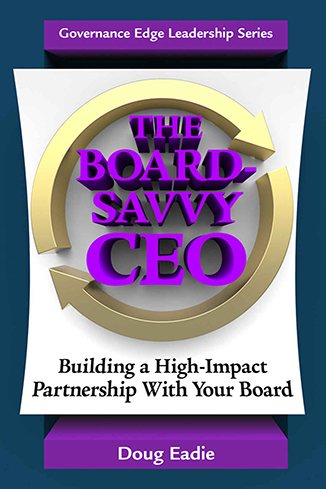 The innovation process – and the role of the chief executive as your organization’s “Chief Innovation Officer” – has been a major focus of this blog, and several posts have featured real-life cases of successful implementation of significant innovation initiatives. Our focus on innovation makes the best of sense in light of the challenges facing all nonprofit organizations in these times of rapid change. Building your organization’s capacity to innovate is the key to future stability and growth, and standing pat, clinging to the present, is a sure-fire recipe for decline.
The innovation process – and the role of the chief executive as your organization’s “Chief Innovation Officer” – has been a major focus of this blog, and several posts have featured real-life cases of successful implementation of significant innovation initiatives. Our focus on innovation makes the best of sense in light of the challenges facing all nonprofit organizations in these times of rapid change. Building your organization’s capacity to innovate is the key to future stability and growth, and standing pat, clinging to the present, is a sure-fire recipe for decline.
Up to now, our posts haven’t paid much attention to a critical element of every organization’s innovation process: creativity. I intend to remedy that by inviting several CEOs to comment on their approaches to building their organizations’ creative capacity in future podcasts. This article is intended to kick off our creativity series by reflecting on the creativity-innovation nexus. The following thoughts on creativity draw on my book Changing By Design (Jossey-Bass), which explores practical ways to generate well-thought-out innovation.
Although the terms “innovation” and “creativity” are sometimes used interchangeably, they mean two very different things. Innovation is the overall process of bringing something new into being – a product, service, program, or management system, for example. Creativity is a key element of the innovation process, serving as the fuel that infuses into the process possibilities for change – ideas for new programs, services, customers, clients, systems, revenues – beyond what an organization is already doing. Creativity alone doesn’t get the innovation job done, of course. Innovation-focused planning explicitly aimed at producing change initiatives is a key element of a well-designed innovation process.
The essential job of the planning function is to translate creative possibilities into strategies (action plans) that must then be implemented – translated into concrete reality – if change is to amount to more than mere rhetoric. Unfortunately, as most readers no doubt know, traditional long-range planning for meaningless cycles like five or ten years has proved to be a total bust in terms of producing concrete innovation, tending to project what is already going on into the future rather than generating real innovation initiatives. The major reason, in my opinion, is the failure to build sufficient creative capacity to generate possibilities for change and funnel them into the planning process..
A critical question facing all organizations is how we can go about building our organizations’ creative capacity. Be on the lookout for answers in the CEO podcasts we’ll be recording for this blog.





